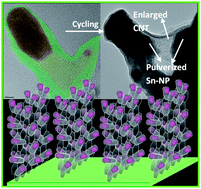We are delighted to announce a cross journal web collection on molecular materials in conjunction with the 5th Molecular Materials Meeting @ Singapore 2015 conference, which will cover the latest developments in molecular materials.
Ten Royal Society of Chemistry journals are encouraging submissions for the collection:
Biomaterials Science
An international, high impact journal bringing together the molecular and mesoscopic interactions of biomaterials and their potential applications
Chemical Communications
Urgent high quality communications from across the chemical sciences.
Green Chemistry
The home of cutting-edge research on the development of alternative sustainable technologies
Journal of Materials Chemistry A
High impact applications, properties and synthesis of exciting new materials for energy and sustainability
Journal of Materials Chemistry B
High impact applications, properties and synthesis of exciting new materials for biology and medicine
Journal of Materials Chemistry C
High impact applications, properties and synthesis of exciting new materials for optical, magnetic and electronic devices
Nanoscale
A high impact peer reviewed journal publishing experimental and theoretical work across the breadth of nanoscience and nanotechnology
Polymer Chemistry
Encompassing all aspects of synthetic and biological macromolecules, and related emerging areas
RSC Advances
An international journal to further the chemical sciences
Soft Matter
Where physics meets chemistry meets biology for fundamental soft matter research.
The overall theme of the conference is “The Next 50 Years in Materials Research”, and this conference will focus on the latest developments and discuss the future of the most promising areas in molecular materials. It will cover a wide range of topics:
- Metamaterials and Plasmonics
- Hybrid Materials and Nanocomposites
- 2D Materials and Devices
- Biomimetic, Biosynthetic, and Bioinspired Materials
- Materials for Sustainability
- Materials for Bioapplications and Sensing
- Materials for Consumer Care and Healthcare
- Materials for Food Nanotechnology
Submissions are welcome to the relevant journal across the themes of the conference.
Articles can be submitted from now until the 1st of May 2015 and the collection will receive promotion at the conference in August. Please indicate in your submission that your manuscript is for consideration for the cross-journal MMM3 2015 web collection. Please note all submissions will be handled following each specific journal’s standard procedures and in that respect articles submitted for the web collection will be treated as regular submissions.
If you have any queries or for more information, please contact the relevant journal Editorial Office: biomaterialsscience-rsc@rsc.org, chemcomm-rsc@rsc.org, green-rsc@rsc.org, materialsa-rsc@rsc.org, materialsb-rsc@rsc.org, materialsc-rsc@rsc.org, nanoscale-rsc@rsc.org, polymers-rsc@rsc.org, advances-rsc@rsc.org or softmatter-rsc@rsc.org.
For your information, Conference abstract submission templates can be found here and you may submit the abstract here: http://bit.ly/1AuY7wU.
Comments Off on Web collection on molecular materials with the 5th Molecular Materials Meeting @ Singapore 2015















